
Traditional Cheez-Its are not compatible with a low-carb diet, containing 14 grams of net carbohydrates per one-ounce serving of 27 crackers. The snack's main carbohydrate sources include enriched wheat flour and cheese components, with only 1 gram of fiber per serving. For those following a low-carb lifestyle, alternatives like homemade cheese crackers or cheese crisps offer considerably lower carbohydrate content, ranging from 0-4 grams per serving. Understanding smart snack alternatives can transform the low-carb journey.
Key Takeaways
- Traditional Cheez-Its contain 14 grams of carbohydrates per one-ounce serving, making them unsuitable for most low-carb diets.
- One serving of Cheez-Its contains 27 crackers and only 1 gram of fiber, resulting in high net carbs.
- Low-carb diets typically restrict daily carbohydrate intake to 20-100 grams, making Cheez-Its a significant portion of that allowance.
- Better alternatives include homemade cheese crackers (2-4g carbs) or cheese crisps (0-2g carbs) for low-carb snacking.
- Store-bought low-carb versions of cheese crackers are available with as little as 1 gram of carbohydrates per serving.
Understanding Cheez Its' Carb Content
When considering Cheez-Its as a snack option, understanding their carbohydrate content is vital for making informed dietary choices. Each one-ounce serving, which contains approximately 27 crackers, delivers about 14 grams of carbohydrates.
While this includes roughly 1 gram of fiber, the net carb content remains significant for those monitoring their carbohydrate intake. The primary source of carbohydrates in Cheez-Its comes from their enriched wheat flour base and cheese components.
Those following strict low-carb diets should make sure to account for these higher carbohydrate levels when planning their daily intake. Additionally, nutritional content can vary between different Cheez-It varieties and flavors, making it important to check individual product labels for accurate carbohydrate information per serving.
The Low-Carb Diet Basics
While traditional diets often rely heavily on carbohydrates, a low-carb diet takes a fundamentally different approach by restricting daily carbohydrate intake to between 20 and 100 grams. This dietary strategy typically follows a macronutrient distribution of 60-75% fats, 20-30% protein, and 5-10% carbohydrates, focusing on whole foods like meats, fish, eggs, and non-starchy vegetables. The low carb benefits extend beyond basic weight loss strategies, as research indicates superior results compared to low-fat diets, particularly for those with insulin resistance or type 2 diabetes. Successful meal prep often involves incorporating protein-rich foods and healthy fats while eliminating grains and sugars. Many followers maintain their dietary goals by including specially formulated low-carb snacks, such as cheese crisps or nut-based alternatives, which help satisfy cravings without compromising carbohydrate restrictions. In contrast to other low-carb diets, the Keto diet's unique macronutrient composition is designed to induce ketosis, resulting in rapid weight loss and improved mental clarity.
Reading Nutrition Labels Like a Pro
Successful navigation of low-carb eating requires mastery of nutrition label analysis. Understanding serving size impact is essential, as portions listed on packages often differ from typical consumption amounts, greatly affecting carbohydrate calculations.
When examining labels, consumers should focus on the total carbohydrates section while noting the dietary fiber importance for determining net carbs. Keeping net carb intake below 20-40 grams per day is essential for maintaining ketosis.
Smart label reading involves careful ingredient sourcing analysis, particularly checking for hidden sugars and high-carb additives that manufacturers may include. Shoppers should compare similar products' carbohydrate content, as brands can vary considerably in their formulations.
While marketing claims like "low-carb" may appear promising, thorough examination of the nutrition facts panel provides the most accurate assessment of a product's true carbohydrate content.
Hidden Ingredients in Store-Bought Snacks
Store-bought snacks like Cheez Its often contain hidden sources of carbohydrates that consumers might overlook when scanning nutrition labels. Beyond the obvious ingredients, manufacturers frequently incorporate enriched flour, various forms of sugar, and starches that considerably increase the total carbohydrate content. Understanding these concealed ingredients requires careful examination of nutrition labels, particularly focusing on the ingredient list and total carbohydrate count per serving size. Many snacks also contain refined carbohydrates that quickly convert to glucose, making them less suitable for low-carb diets like keto.
Hidden Sugar Sources
Hidden sugars lurk in countless store-bought snacks, including seemingly savory options like Cheez Its, making the search for truly low-carb alternatives more challenging than many consumers realize.
Product manufacturers often disguise sugar alternatives under various names, such as "natural flavors" or "fruit concentrates," which can greatly impact the total carbohydrate content.
Even savory snack ingredients may contain unexpected sources of hidden carbohydrates, with seasoning blends incorporating sweeteners that aren't immediately apparent on labels.
Common additives like maltodextrin, while serving as thickeners or fillers, contribute to the overall carbohydrate count.
To accurately assess a snack's carbohydrate content, consumers must carefully examine nutrition labels, paying particular attention to ingredients that may be sugar in disguise, such as high fructose corn syrup or various syrups.
Reading Nutrition Labels
Savvy consumers understand that decoding nutrition labels requires more than a quick glance at calorie counts, particularly when evaluating store-bought snacks for their true carbohydrate content. Proper label comprehension involves examining ingredients listed in descending order by weight, with special attention to carbohydrate awareness when flour or sugar appears near the top of the list.
Thorough ingredient scrutiny should focus on identifying hidden carbohydrate sources, such as modified food starch, corn syrup, and high fructose corn syrup, which are common in processed snacks.
Additionally, serving size verification is vital, as portions can greatly impact total carbohydrate intake. Even products marketed as "low-carb" or "keto-friendly" warrant careful examination, since they may contain alternative ingredients that can affect blood sugar levels.
Making Smart Snack Choices
While many people reach for familiar snacks like Cheez-Its during their daily routines, making informed choices about carbohydrate content can greatly impact dietary goals.
With 22 grams of carbs per serving, traditional Cheez-Its may not align with low-carb lifestyle requirements, making alternative snack options essential for maintaining dietary success.
Traditional Cheez-Its pack 22 grams of carbs per serving, making them incompatible with low-carb diets and creating a need for healthier alternatives.
For those seeking low carb meal ideas and effective snack portioning strategies, consider these smart alternatives:
- Homemade almond flour cheese crackers, containing only 2 grams of carbs per serving
- High-protein options like cheese cubes paired with nuts for sustained energy
- Fresh vegetable sticks combined with protein-rich dips for satisfying crunch
These alternatives provide similar satisfaction to traditional crackers while supporting low-carb dietary goals through mindful snack choices and proper portion control. Adding snacks like non-starchy vegetables or berries can ensure a nutrient-rich diet that aligns with low-carb objectives.
Homemade Low-Carb Alternatives
Creating homemade low-carb Cheez Its involves combining almond flour, xanthan gum, and extra sharp cheddar cheese into a dough that captures the familiar taste and texture of the original snack. The crackers require careful attention during baking at 250°F to achieve the desired crispiness, with periodic checks to prevent over-browning or burning. Once cooled completely, these keto-friendly crackers can be stored in an airtight container at room temperature for up to two weeks, maintaining their satisfying crunch and cheesy flavor. Incorporating almond flour in the recipe provides a nutty flavor and moisture, making it a popular choice for keto-friendly baking.
Making Keto Cheez Its
For those following a ketogenic lifestyle, homemade low-carb Cheez Its provide a satisfying alternative to the traditional high-carb snack.
These keto cheese variations utilize almond flour, which offers significant benefits through its naturally low carbohydrate content, combined with xanthan gum for ideal texture. Extra sharp cheddar cheese enhances both flavor and the desired fat content for ketogenic dietary needs.
- Bake crackers at 250°F for 20-25 minutes to achieve the perfect crispy texture
- Use almond flour as the primary base to maintain low-carb integrity
- Incorporate extra sharp cheddar for authentic flavor and ideal fat content
These homemade crackers excel in snack pairing ideas, particularly complementing keto-friendly grilled cheese alternatives, offering versatility while maintaining strict low-carb requirements.
Storage And Shelf Life
Proper storage methods maximize the enjoyment of homemade low-carb Cheez Its long after baking. For ideal freshness tips, allow crackers to cool completely before implementing moisture control measures, preventing unwanted condensation that could compromise their crispy texture.
At room temperature, store these keto-friendly crackers in an airtight container for up to seven days.
For extended freshness, refrigeration offers a two-week shelf life while maintaining quality.
Storage methods can be further refined by freezing the crackers in sealed containers or bags, preserving them for up to three months.
When retrieving frozen crackers, simply let them reach room temperature naturally, or briefly warm them in the oven to restore their original crispiness and enhance their cheesy flavor.
Essential Kitchen Tools for Low-Carb Baking
While making low-carb versions of favorite snacks requires careful attention to ingredients, having the right kitchen tools is equally important for success.
When adapting baking techniques and ingredient substitutions, specific kitchen gadgets become critical for achieving ideal results.
Key tools for successful low-carb baking include:
- A high-powered food processor to thoroughly blend almond flour and xanthan gum into smooth, workable dough.
- Non-stick tools like parchment paper and a pizza cutter for precise dough handling and uniform shapes.
- Temperature-monitoring equipment, such as an oven thermometer, to maintain consistent baking conditions.
These important tools help guarantee proper ingredient incorporation, even baking, and professional-looking results.
Additionally, wooden skewers or chopsticks play an essential role in creating proper ventilation holes, contributing to the desired crispy texture of low-carb crackers.
A ThermoPro Dual Probe thermometer ensures precise cooking temperatures, enhancing flavor and safety in low-carb baking.
Tips for Perfect Cheese Crisps
Creating perfect low-carb cheese crisps demands attention to specific techniques and ingredient ratios that work together to achieve the ideal crunch and flavor. For optimal outcomes, bakers should focus on precise measurements and careful temperature adjustments throughout the process. Avocado oil, known for its high smoke point, can be a great addition to enhance the cooking process for cheese crisps.
| Component | Technique |
|---|---|
| Base | Use almond flour for structure |
| Binding | Add xanthan gum for elasticity |
| Cheese | Choose extra sharp cheddar |
| Thickness | Roll to pencil-width consistency |
| Temperature | Bake at 250°F for 20-25 minutes |
Various cheese crisp variations can be achieved by experimenting with different cheese combinations, while flavor enhancement techniques might include adding herbs or spices. Careful baking temperature adjustments are essential, as even slight changes can affect the final texture. The low, slow baking process guarantees the crisps develop their characteristic crunch without burning.
Storing Your Low-Carb Snacks
Proper storage techniques are essential for maintaining the quality and extending the life of homemade low-carb cheese snacks. An airtight container offers the best protection against moisture and staleness, while storing the snacks in a cool, dry place helps preserve their crispy texture. For ideal freshness and food safety, consider refrigerating cheese-based snacks and portioning them into single-serving containers, making sure to label each with the preparation date. Using eco-friendly packaging options not only reflects environmental commitment but also aligns with the growing demand for sustainable practices.
Airtight Storage Is Key
The satisfying crunch of low-carb crackers depends heavily on their storage conditions after preparation. To maintain snack freshness and moisture control, proper container types play an essential role in preserving texture and flavor.
Storing homemade crackers in airtight containers or resealable bags creates an effective barrier against humidity, while keeping them in a cool, dark location further extends their shelf life.
For ideal storage success:
- Add a desiccant packet to your container to absorb excess moisture
- Label containers with preparation dates to track freshness
- Monitor stored snacks regularly for changes in texture or unusual odors
This systematic approach to storage guarantees your low-carb crackers maintain their satisfying crunch and taste while preventing spoilage, making them ready to enjoy whenever cravings strike.
Temperature And Freshness Tips
While maintaining ideal temperature conditions directly impacts the longevity of low-carb snacks, understanding proper storage techniques can considerably extend their shelf life.
Temperature control methods play an essential role in preserving the quality of homemade low-carb crackers and similar snacks. For best storage conditions at room temperature, store these items in airtight containers for up to seven days.
For extended freshness preservation techniques, utilize refrigeration or freezing methods, which can maintain quality for several weeks.
Before implementing any storage solution, verify the snacks have completely cooled to prevent unwanted moisture. When using zip-top bags, remove excess air to maintain crispness.
If snacks become soft, a brief warming in a low-temperature oven can effectively restore their original texture.
Extending Their Shelf Life
Successfully extending the shelf life of low-carb snacks requires strategic storage methods and consistent monitoring of environmental conditions.
Implementing effective storage solutions involves understanding key snack preservation techniques and moisture control methods to maintain ideal freshness.
To maximize shelf life and maintain quality, consider these essential practices:
- Store snacks in airtight containers with desiccant packets to control moisture levels and prevent sogginess.
- Keep containers in cool, dark locations away from direct sunlight and heat sources.
- Consider refrigeration or freezing for extended storage periods, particularly in humid climates.
Regular inspection of stored snacks helps identify potential spoilage early, ensuring food safety and maintaining taste quality.
The combination of proper storage containers, environmental control, and vigilant monitoring creates an ideal preservation system for low-carb snacks.
Comparing Popular Cheese Snacks
Since many health-conscious consumers seek low-carb alternatives to traditional snacks, understanding the carbohydrate content of popular cheese snacks becomes vital for making informed dietary choices.
When conducting cheese snack comparisons, traditional Cheez-Its contain approximately 14 grams of carbohydrates per 30-gram serving, while carb content analysis reveals more favorable alternatives.
Homemade cheese crackers using almond flour typically contain only 2-4 grams of carbs per serving, and cheese crisps offer an even lower option at 0-2 grams.
For those seeking healthy snack swaps, examining nutritional labels is essential, as some manufacturers now produce specialized low-carb versions containing as little as 1 gram of carbohydrates per serving, making them considerably more suitable for carb-conscious consumers. Cheese crisps are a popular option for those following a keto diet due to their low carb content and high protein profile.
Meal Planning With Low-Carb Snacks
Effective meal planning with low-carb snacks requires strategic preparation and thoughtful consideration of nutritional content throughout the day. By implementing proper snack preparation techniques, individuals can maintain their dietary goals while enjoying satisfying alternatives to traditional high-carb options. When incorporating portion control strategies and flavor enhancement ideas, consider these essential steps:
Strategic meal planning with low-carb snacks enables better nutrition and helps maintain dietary goals through mindful preparation and satisfying food choices.
- Pre-portion snacks into individual servings using cheese crisps, nuts, or homemade almond flour crackers.
- Experiment with herbs and spices to create varied flavor profiles without adding carbohydrates.
- Keep protein-rich options readily available to maintain energy levels and prevent impulsive eating.
Including healthy alternatives like zucchini chips or pepperoni chips can help maintain the keto journey deliciously.
Through careful planning and creative preparation, meal planners can successfully integrate low-carb snacks that not only support their nutritional goals but also provide enjoyable eating experiences throughout their day.
Best Practices for Low-Carb Success
To achieve sustainable results on a low-carb diet, individuals must implement specific practices that align with their nutritional objectives and lifestyle preferences.
Effective snack portioning techniques include pre-measuring servings into individual containers and tracking daily carbohydrate intake through detailed food logging.
Successful low carb meal prep involves batch-preparing homemade alternatives using almond flour and natural flavor enhancers, while carefully monitoring ingredient quality and nutritional content.
Flavor pairing ideas can enhance the snacking experience by combining proteins with healthy fats, such as creating cheese-based crisps seasoned with herbs or crafting nut-based crackers enhanced with cheddar powder.
These combinations help satisfy cravings while maintaining adherence to low-carb guidelines. By focusing on whole foods and avoiding processed options, individuals can better control their carbohydrate consumption and achieve their dietary goals.
Frequently Asked Questions
Can I Eat Cheez-Its and Lose Weight?
Weight loss strategies should focus on healthier snack alternatives rather than Cheez-Its. While possible to lose weight eating them, portion control becomes essential due to their high carbohydrate and calorie content.
Can I Eat Cheez-It on Keto?
Cheez-Its aren't suitable for keto diets due to high carbohydrate content. Those following low carb diets should choose keto snack alternatives like cheese crisps or homemade almond flour crackers as cheese snack substitutes.
How Much Carbs Are in Cheez-Its?
A serving of Cheez-Its contains 22 grams of carbohydrates from enriched wheat flour. When seeking lower-carb alternatives, consumers might consider cheese crisps, nuts, or pork rinds for snacking options.
Can Cheez-Its Be a Healthy Snack?
Cheez-Its offer limited nutritional value and should not be considered a healthy snack choice. While portion control helps limit intake, healthier alternative snacks like nuts or homemade almond flour crackers provide better nutrients.
Conclusion
Making informed snack choices requires careful attention to nutrition labels and understanding ingredients. While Cheez-Its are not considered low-carb, numerous alternatives exist for those following carb-restricted diets. By comparing nutritional content, planning meals thoughtfully, and selecting appropriate portion sizes, individuals can maintain their dietary goals while enjoying satisfying snacks. Success in low-carb eating comes from knowledge, preparation, and mindful choices about everyday food selections.
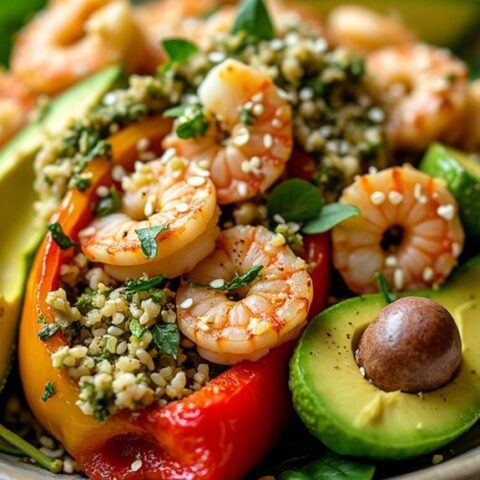
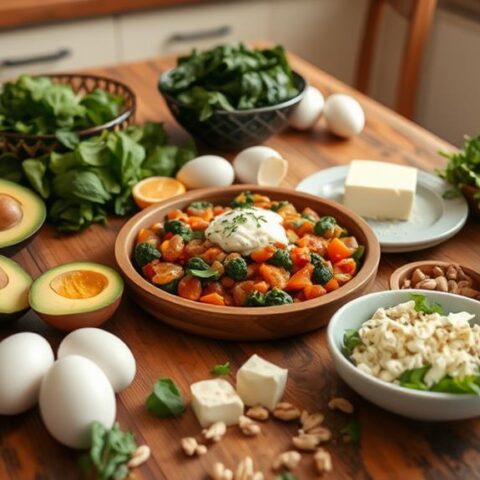



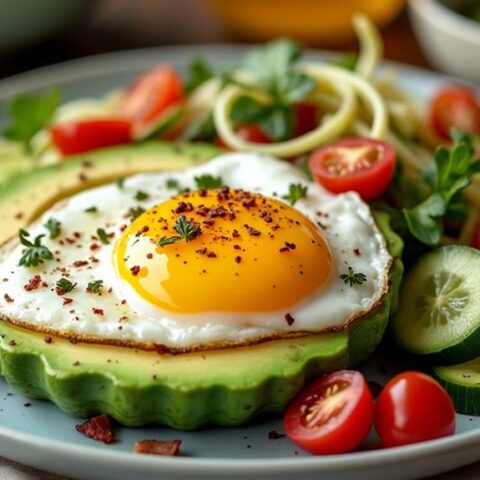
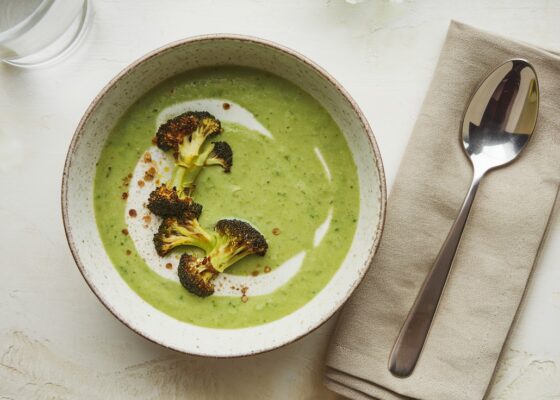

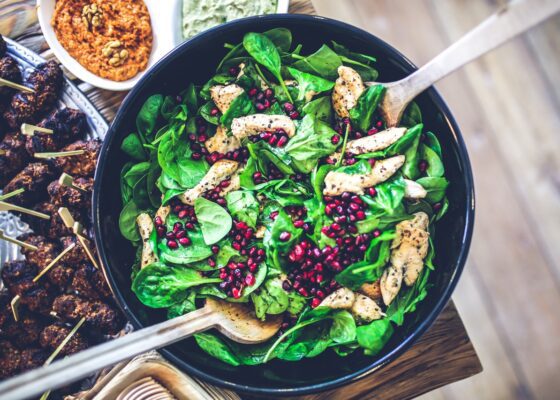
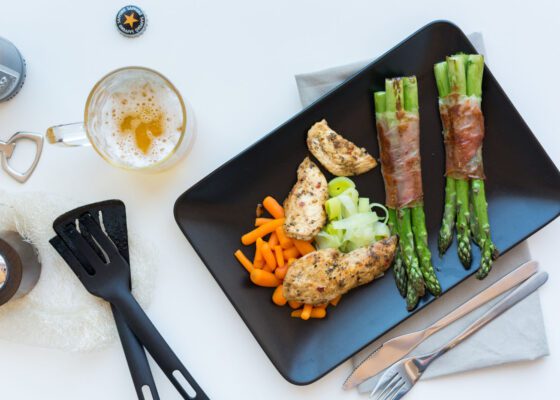
No Comments